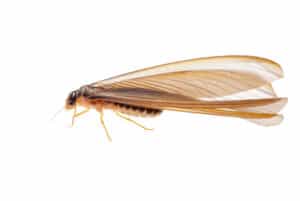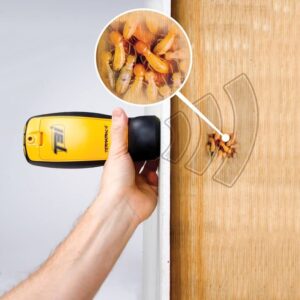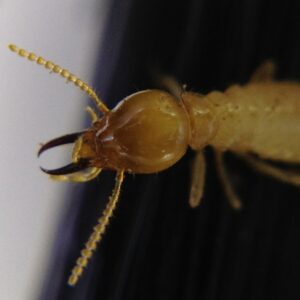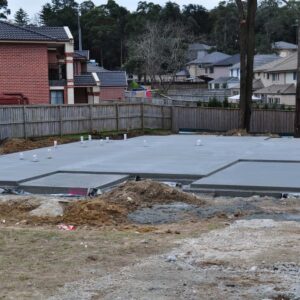Professional Termite Protection for your Property
The chances of your property coming under termite attack is greater than house fire, flood and other natural disasters combined, yet it is not covered by your home insurance! Termite management is often overlooked by home owners, but in many ways it is more important than your home insurance and should be considered a standard cost of home ownership.
A Professional Termite Management Plan
To provide the best protection for your home you need to put in place a termite management plan. There are 4 elements to a successful termite management plan:
- Termite protection built into the home at the time of construction
- Making conditions around your home less attractive to termites
- Having an annual professional termite inspection (more often in high risk areas
- Installing a termite management system around the building to provide lasting protection
Termite protection built into the home at the time of construction
All homes provide a physical barrier to termites to a greater or lesser degree, but there are always points of weakness where termites can enter the home without being noticed. For example, homes built on brick piers have metal “ant capping” on the top of each pier to prevent termites moving up inside the brick pier and attacking the wood flooring – they need to build around the metal sheet to get to the floor and if they do they will be spotted during a termite inspection.
Most newer homes will have a range of physical barriers (and sometimes chemical termite barriers) installed in and around the house at the time of construction and work with the physical elements of the building to provide an integrated system to provide protection from termites. However, these systems never provide 100% protection and will often be compromised over time, making the home susceptible to termite attack. This is why annual termite inspections are a must and the installation of a termite management system highly recommended.
If you are building a new home or renovating please contact Go Pest about termite protection.
Make your home less attractive to termites
Making your home less attractive to termites is key to reducing the chances of a termite attack – eliminate sources of moisture and food.
Eliminate sources of water
- Fix drainage issues around and under the house
- Don’t water the garden beds around the perimeter of the house
- Fix up any leaking outdoor taps
- Make sure air conditioning and hot water overflows go into drains
- Make sure there are no leaks inside, particularly in the bathrooms and laundry
Eliminate sources of food
- Avoid using wood mulch in gardens, especially next to the house
- Store any fire wood away from the house
- Avoid storing cardboard boxes and waste wood under the house
- Remove any wood stumps from yard
- Avoid using wood retaining walls
Annual termite inspections
Termite inspections at least once a year are recommended by governments, building authorities and Australian Standards. Not only will they pick up active termites and signs of termite damage, but they should identify building construction faults and conducive conditions that may make the building more susceptible to a termite attack.
Install a termite management system
To prevent termites attacking a building, it is necessary to install a termite management system around and under (if you have a sub-floor) the home. The termite management system will either be a termite treatment to the soil or the installation of a termite baiting system. The choice of system will depend on a number of factors including the construction of the building and soil type. It is important to understand that all termite managements systems are designed to work in conjunction with the physical features of the building to prevent concealed termite entry. ie. With a termite management system installed the only way for termites to enter the home is to make themselves visible (by building a mud tube), which can then be observed by the home owner or picked up during the annual termite inspection.
Termites Victoria – Termite Information
What are termites ("white ants")?
Termites are insects and although many people call them “white ants”, they aren’t ants at all. In fact, termites are more closely related to cockroaches!
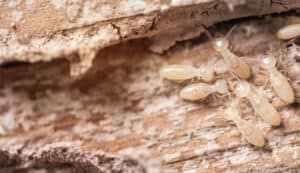
Termite nest / termite colony
The main pest termites species in Australian are subterranean termites. They live in large nests of up to a million individuals. Their nests may hidden underground or in tree trunks, sometimes obvious as mounds on the ground and sometimes as arboreal nests (in the trees).
Termite queen
The termite queen is the most important termite in the colony as she lays all the eggs, up to 2,000 per day! To eliminate a termite nest you need to kill the queen. Sometimes there are more than one queen in the colony. Termite queens can live for over 20 years!
Flying termites
Flying termites are the new kings and queens, which can appear in great numbers as swarms of termites. These termite swarms are released from nests in spring and summer on warm, humid nights. They pair off, fall to the ground, drop their wings and move off to find a place to start a new nest. If you see lots of flying termites around lights near your home or piles of wings on the ground in the morning, it means there is a large termite nest nearby and you should call Go Pest immediately.
